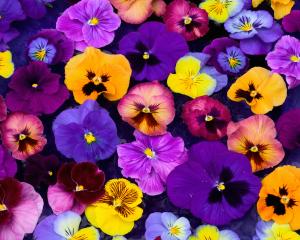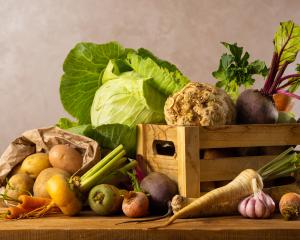The vegetable-sowing season is upon us, says Gillian Vine.
With such warm dry conditions in August that the air in my suburb was full of the sound of lawnmowers, it seemed a promising start to spring. Those who didn't yield to the temptation to get into the vegetable garden early probably felt smug when the weather turned sour earlier this month.
The main seed-sowing month is October, but radishes, carrots, peas, beetroot, white turnips and lettuces are some of the hardier vegetables that can be sown now, while cabbage, cauliflower and broccoli can be planted.
Labour Weekend is the traditional time to plant potatoes, but early varieties like Jersey Benne and Swift can go in now, although the emerging shoots will need protection from frost. Although it can be messy, pea or barley straw is good because it adds nutrients to the ground as it breaks down.
The presence of tomato/potato pysllid may make some gardeners think twice about whether to grow spuds. This North American aphid-like pest was found in New Zealand in 2006 and has since spread throughout the country.
In any case, with gardens getting smaller, potatoes are probably not the most efficient use of space for, as Mel Bartholomew says in his very good book, Square Metre Gardening, each plant needs about a square metre of garden. Actually, most people would squeeze two or three into that space but for those with tiny plots, radishes, carrots, spring onions and mini Tom Thumb lettuces give better returns. A potato or two can still be grown in a bucket or large pot.
Bartholomew also advocates packing plants tightly, not only to reduce weeding but to get the maximum crops from minimum spaces. Big garden or small, that principle is a sound one but whatever you grow and however you arrange them, vegetables must have a good start in life, beginning with good soil or seed-raising mix.
The second requirement is space to develop. That means not being heavy-handed with seed, as sowing too thickly not only uses more than necessary but also creates extra work in having to do extra thinning. If seedlings don't have enough room, they will struggle for light and nourishment, becoming weak and perhaps dying. An old trick is to mix radish and carrot seed and sow them together. When the radishes are pulled, the carrots are left quite nicely spaced. With beetroot, the thinnings can be used in salads.
If you plan to grow tender vegetables such as runner beans, capsicums and zucchini, sow them now in a tray of seed-raising mix and keep just damp and under cover to germinate. Transplant into rich soil and cover with a cloche or other form of protection until the danger of frosts zapping them is over.
Where space is tight, look around to see how better to utilise it. Runner beans can look quite decorative against a fence at the back of a flower bed and there is a newer variety, Sunset Runner, that has pretty salmon-pink flowers.
Other candidates for the flower garden are globe artichokes (the large silvery leaves go well alongside lavender), coloured silverbeet (Golden Sunrise has yellow stems), purple-leafed mustard and pak choi, while chives, thyme or clipped rosemary can be used as edgings.
In the midst of all the sowing and planting, don't forget to compost weeds and other suitable waste. A revolving bin is an attractive option for a small section but if funds are limited, a trench in the garden works well - just fill it with weeds, lawn clippings and vegetable scraps, add a handful each of blood and bone and lime per square metre, then cover with the soil dug from the trench. Plant cabbages, broccoli, celery or silverbeet and when they have finished cropping, the material underneath will have broken down nicely.












